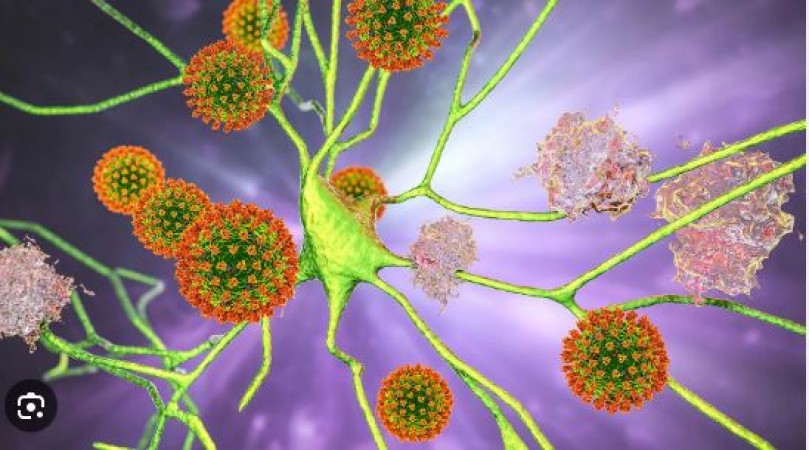
Paralysis is a medical condition that affects millions of people worldwide. It is characterized by the loss of muscle function in specific parts or the entire body, resulting in a loss of movement and sensation. This article aims to delve into the various aspects of paralysis, including its types, causes, symptoms, diagnosis, treatment, coping mechanisms, assistive technology, research advancements, and prevention.
Understanding Paralysis
Paralysis occurs when there is a disruption in the communication between the brain and the muscles. This disruption can stem from injuries, diseases, or medical conditions affecting the nervous system. The severity of paralysis can range from mild muscle weakness to complete loss of movement and sensation.
Types of Paralysis
Monoplegia
Monoplegia refers to paralysis that affects only one limb, such as an arm or a leg. It is often caused by localized nerve or muscle damage.
Hemiplegia
Hemiplegia involves paralysis on one side of the body, affecting either the left or right side. This type of paralysis is often caused by stroke or brain injuries.
Paraplegia
Paraplegia results in the paralysis of both legs and, in some cases, the lower body. It is typically caused by spinal cord injuries.
Quadriplegia
Quadriplegia, also known as tetraplegia, affects all four limbs and the torso. It occurs due to high-level spinal cord injuries.
Causes of Paralysis
Spinal Cord Injuries
Spinal cord injuries, resulting from accidents or trauma, are a common cause of paralysis. Damage to the spinal cord disrupts nerve signals, leading to paralysis.
Stroke
Stroke occurs when blood flow to the brain is interrupted, causing brain cell damage. Depending on the affected brain area, it can lead to paralysis.
Traumatic Brain Injury (TBI)
A severe blow to the head or penetrating injury can cause traumatic brain injury, leading to paralysis or loss of motor functions.
Multiple Sclerosis (MS)
Multiple sclerosis is an autoimmune disease that damages the protective covering of nerve fibers, leading to paralysis in some cases.
Guillain-Barre Syndrome
Guillain-Barre Syndrome is a rare autoimmune disorder where the immune system attacks the nerves, resulting in muscle weakness and paralysis.
Symptoms and Diagnosis
The symptoms of paralysis depend on the type and location of the affected nerves. Common symptoms include muscle weakness, loss of sensation, and reflex issues. Diagnosis involves medical history evaluation, physical examination, and various diagnostic procedures like MRI and nerve conduction studies.
Treatment and Management
Physical Therapy
Physical therapy plays a vital role in the recovery of paralyzed patients. It focuses on strengthening muscles, improving mobility, and enhancing independence.
Medications
Medications like muscle relaxants and pain relievers are often prescribed to manage paralysis-related complications.
Assistive Devices
Assistive devices like wheelchairs and mobility aids enable paralyzed individuals to move around independently.
Surgery
In some cases, surgical interventions may be necessary to alleviate pressure on nerves or repair damaged tissues.
Psychological Support
Paralysis can have significant psychological effects, and counseling or therapy may be required to cope with emotional challenges.
Coping with Paralysis
Adaptive Strategies
Learning adaptive strategies can help paralyzed individuals accomplish daily tasks and maintain their independence.
Support Groups
Participating in support groups provides emotional support and valuable insights for coping with paralysis.
Mental Health
Maintaining mental well-being is crucial, and seeking professional help can assist in dealing with the psychological impact of paralysis.
Assistive Technology for Paralysis
Wheelchairs and Mobility Aids
Wheelchairs and mobility aids have undergone significant advancements, offering increased mobility and comfort for paralyzed individuals.
Speech Recognition Software
Speech recognition software allows individuals with limited mobility to interact with technology using their voice.
Brain-Computer Interfaces (BCIs)
BCIs enable direct communication between the brain and external devices, offering new possibilities for paralyzed patients.
Exoskeletons
Exoskeletons are wearable robotic devices that assist paralyzed individuals in walking and performing daily activities.
Research and Advancements
Regenerative Medicine
Advancements in regenerative medicine hold promise for repairing damaged nerve tissue and restoring function.
Neural Interfaces
Neural interfaces aim to establish direct connections between the brain and external devices, aiding paralyzed individuals.
Robotic Rehabilitation
Robotic rehabilitation devices offer targeted therapy to retrain the nervous system and improve motor skills.
Gene Therapy
Gene therapy research explores the potential of genetic modifications to treat paralysis and promote nerve regeneration.
Prevention
Preventing Accidents
Practicing safety measures and precautions can help prevent accidents leading to paralysis.
Lifestyle Changes
Maintaining a healthy lifestyle, including regular exercise and a balanced diet, can reduce the risk of conditions that may cause paralysis.aralysis is a complex medical condition with various causes and impacts. Understanding the different types, causes, symptoms, and treatment options is essential for both those affected and their caregivers. As research and technology continue to advance, there is hope for improved treatment and enhanced quality of life for paralyzed individuals.
An Instruction Manual for Taking Your Blood Pressure at Home
The Birth of Instagram: From Burbn to Social Media Giant
If your child also has the problem of constipation then these home remedies will give relief